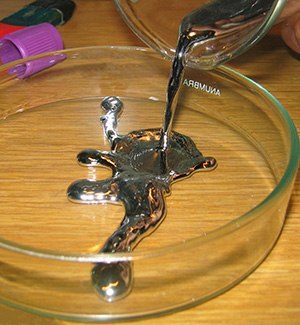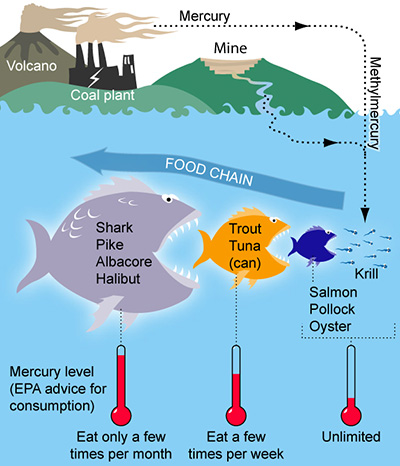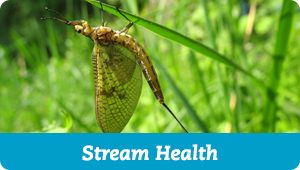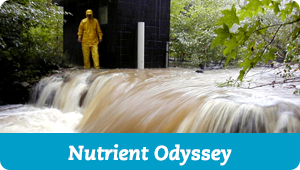Mercury poisoning has many faces. Over time it has worked its way into light bulbs and seafood, and even impacted the brains of unborn fetuses. The Mad Hatter of Lewis Carroll’s Alice in Wonderland obtained his unhinged personality from inhaling fumes of elemental mercury. Its most toxic form is methylmercury: a powerful neurotoxin that has infiltrated our rivers and fish.

Quicksilver, or liquid mercury. Mercury is the only metal that is liquid at room temperature—which makes it very easy for it to infiltrate streams and the aquatic food web. ©Bionerd
Mercury is a strange chemical. It is the only metal that is liquid at room temperature (a fact that made it ideal for old thermometers). It’s also extremely rare—so rare that in the atmosphere, scientists have to measure it in parts per trillion. But when it leaves the atmosphere, its effects on life can be drastic.
Cynthia Gilmour’s lab traces the journey mercury takes to reach us, from its mostly harmless state in solid coal to the methylmercury in tuna.
Coal-burning power plants release roughly 44 percent of human-produced mercury air emissions in the U.S.—by far the largest human source in the country. Mercury can remain in the atmosphere for years. But eventually it falls to the ground as rain. There, in the soils of streams and rivers, it transforms into methylmercury.
Aquatic bacteria convert pure mercury (Hg) into its even more toxic sibling methylmercury (CH3Hg). Methylmercury is easier to absorb and takes longer to excrete than other forms of mercury. It can damage the immune system and nervous system. It’s especially dangerous for developing embryos, which are five to 10 times more sensitive than adults. Children exposed to methylmercury in the womb are at higher risk of brain damage that could cause them to struggle in school.

Each time methylmercury reaches a new level in the food chain, its concentration increases as much as ten times. Biologists call this bioaccumulation. It is the reason eating tuna is more dangerous than eating oysters. ©Bretwood Higman, Ground Truth Trekking
Methylmercury can appear anywhere in the food web. But there’s a reason tuna has attracted the most alarm. Unlike most substances, methylmercury becomes more concentrated the higher it moves in the food chain. Biologists call this process bioaccumulation. Each time methylmercury reaches a new level, its concentration can become up to 10 times greater in the next life form. Giant fish like tuna sit near the top of the aquatic food chain. Because of that, methylmercury concentrations in fish can be thousands or millions of times greater than in the surrounding water.
But Gilmour’s lab has discovered a glimmer of good news. First, over the last 20 years mercury deposition has declined in the places they have sampled across the eastern U.S. Second, older mercury is more difficult for bacteria to process. As normal mercury ages in the soil, it becomes harder for bacteria to convert it into methylmercury. This means that if we can keep new mercury from entering an ecosystem, our food and our health will be in much less danger.
Learn more about Cynthia Gilmour’s work in the Microbial Ecology Lab

 Be careful with your light bulbs! Compact fluorescent lights (CFLs) are fantastic for saving energy, but they can release mercury if they break or get thrown away. Read the
Be careful with your light bulbs! Compact fluorescent lights (CFLs) are fantastic for saving energy, but they can release mercury if they break or get thrown away. Read the 

